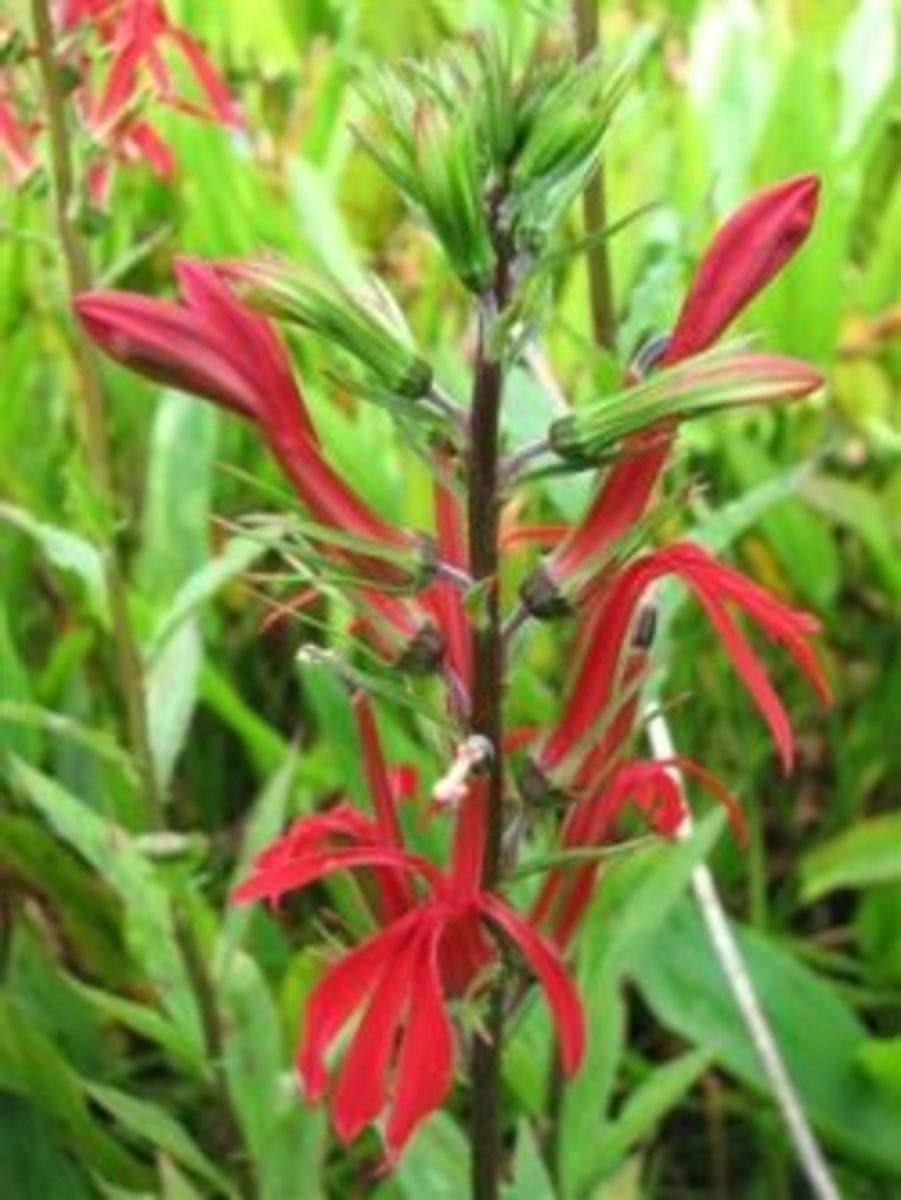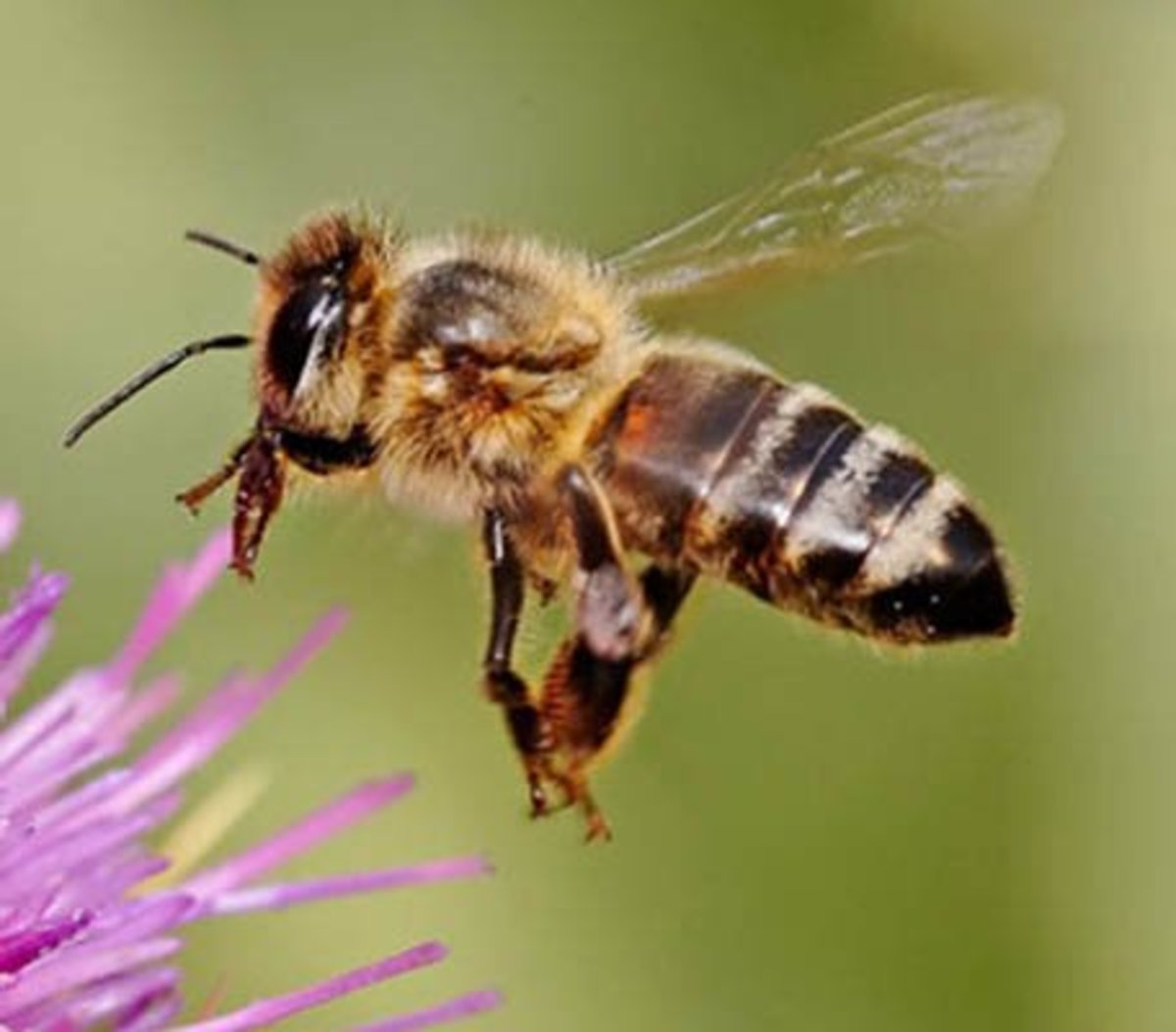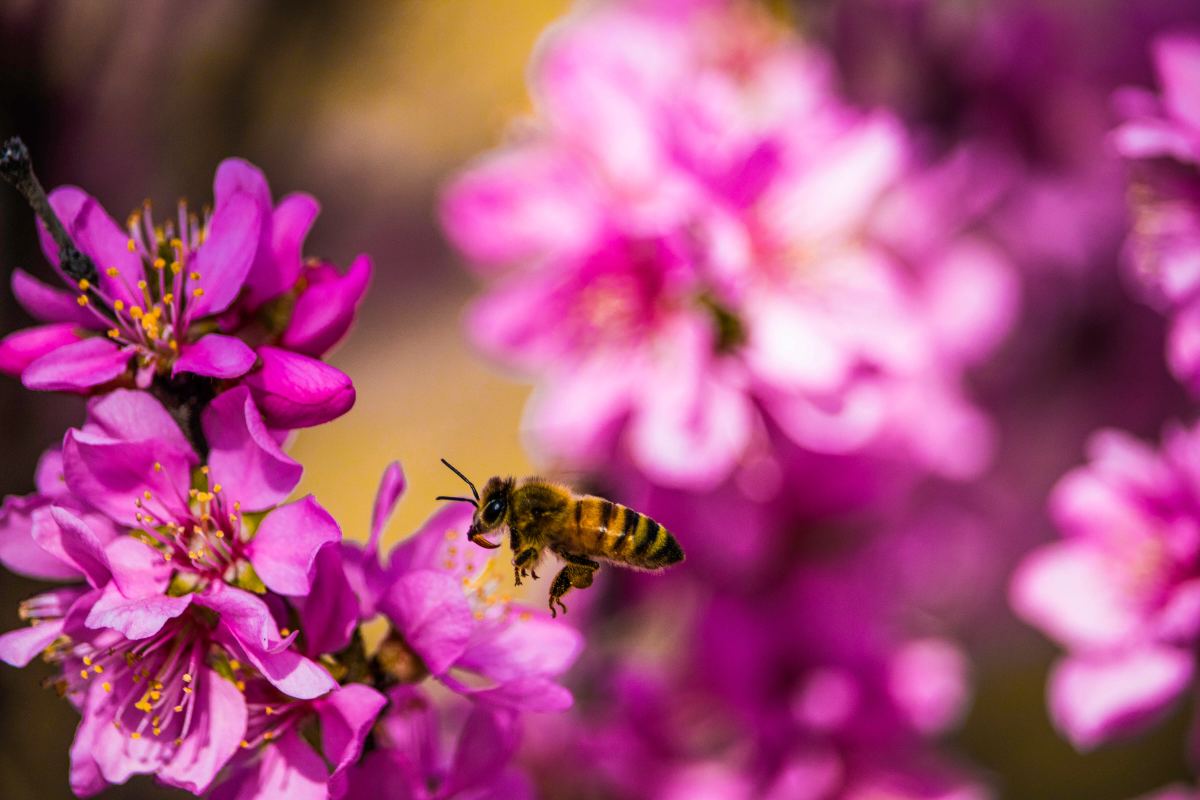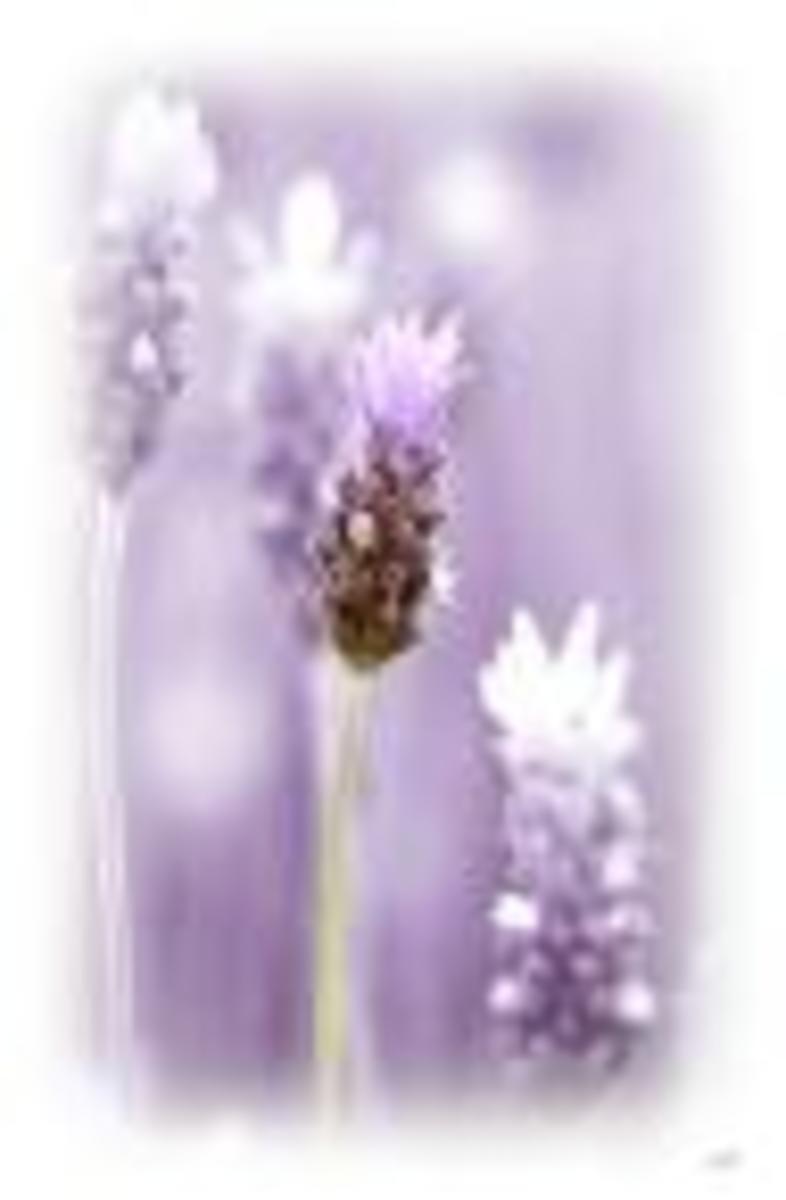Spring Pollination
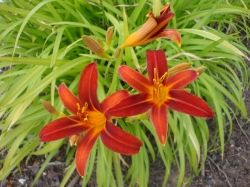
Spring is pollination time
Spring signals the end of Winter and the onset of pollination. So what is pollination? Pollen is the dust-like powder on the stamen of a flower that not only causes pollen allergy but is necessary for flowers and plants to produce seeds and fruits. Pollen is produced by the stamen, the male part of the flower which must be moved to the stigma, the female part of the flower in order for seeds to be created. This is called pollination. Since flowers cannot do this on their own, pollinators, like the wind, birds, bees, insects, and man help in pollination.
So where is pollen produced in the flower?
Let's take a look at the anatomy of this tulip
The stamen is the male reproductive part of the flower which produces the sticky powder called pollen. The stamen consists of a slender filament and sac-like structures called anthers. The six anthers in the tulip are laden with yellow pollen. The star-shaped structure in the center is the stigma which receives the pollen at pollination. The stigma is held up by a slender style and collectively, this is called the pistil, or the female reproductive part of the flower. Pollen has to be moved from the stamen to the stigma for pollination to occur.
These are photos which I took of a tulip and lily on the kitchen counter. These illustrate stamens of varying heights. Flowers that are pollinated by wind often have long stamens like the lilies.
Did you know...
The number of stamens is usually the same as the number of petals.
Take this quick poll
There are a lot of plants that sprouted in my garden that came from nowhere. Well, these came from somewhere, brought by the birds, insects, or wind. These plants did not exist in the garden and then one day, viola, these were growing happily in every corner.
Do you own plants that were pollinated by wind, bees, birds?
Active during the day, bees visit flowers to get pollen to feed the babies and nectar to make honey. They use their senses of sight and smell to lead them to flowers. They prefer sweet-smelling flowers and blossoms that are yellow, blue, purple, and white (red looks like black to them).
Flowers try to attract bees by having brightly colored petals, pretty smells, and very sweet nectar. Bees and flowers help each other. This kind of relationship in nature is called symbiosis.
Powdery pollen stick to the hairy bodies of bees as they visit flowers looking for nectar and pollen. As the bees fly from one flower to another to gather nectar, some of the pollen fall off and a new flower is pollinated. The back legs of the worker females have little sacs to carry pollen.
Bee pollinating my garden - Bee doing what its does best
The lavender bush is the favorite flower of the bees in our garden. I chanced upon this bee collecting pollen for its babies and nectar to make honey.
Bee gathering pollen from a lavender bush in my garden
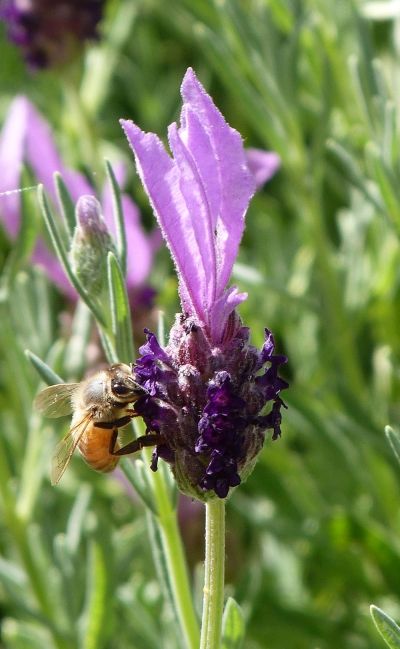
When a hummingbird dives into a flower to sip the sugary nectar, pollen will stick to the hummingbird's beak and then rub off on the next flower the bird visits. Hummingbirds also have an advantage over other pollinators - they can hover next to the flower to feed; other types of birds perch to feed.
The Flower Fly is reputed to outperform bees as pollinators in orchards. Flies, gnats, mosquitoes are not as hairy as bees and efficient in carrying pollen, but some are good pollinators. Flies are attracted to flowers that are pale, dark to purple, and have a putrid odor like rotten meat like the Skunk Cabbage. Tiny gnats are attracted to the fungus-like smell of the Jack-in-the pulpit flowers.
This Cape Sugarbird is busy feeding on nectar. Larger birds with long bills usually visit larger flowers.
This Queen Butterfly (Danaus gilippus) looks very regal on a Mexican Hat Flower (Ratibida columnaris). Active during the day, butterflies use their sense of sight to lead them to flowers. They prefer flowers that are red or orange. Since butterflies are not strong enough to hover, like hummingbirds, they must land on flowers to feed on nectar with their long tongues called proboscis, which act like straws to sip nectar.
This Northern Paper Wasp forages for food. Wasps look like bees, but are generally not covered with fuzzy hairs. As a result, they are much less efficient in pollinating flowers, because pollen is less likely to stick to their bodies and to be moved from flower to flower. Wasps, like bees, have very high-energy needs that must be met for their survival. Wasps need key resources such as pollen and nectar from a variety of flowers. The true wasps have stingers that they use to capture insects or spiders for food for their larvae.
Did you know that mosquitoes are pollinators? Mosquitoes are known pollinators of bog orchids, Habenaria obtusata.
Beetles are especially important pollinators for ancient species such as magnolias and spicebush. Some types of magnolias drop their stamen when ripe and that is when the pollen gathering party of beetles begin. Beetles will eat their way through petals and other floral parts. They even defecate within flowers, earning them the nickname "mess and soil" pollinators. Research has shown that beetles are capable of color-vision. Beetles prefer flowers that are white to dull white and strongly fruity.
Did you know....
Pollinators are responsible for 1 out of every 3 bites of food you eat!
It's a jungle out there
Meet the furry pollinators
This Geoffrey's marmoset feeds on tree sap for its meal which necessitate it to bite on the bark and get the sap flowing. When the tree forms a gum to plug up the hole, the marmoset rips up the bark, eats the gum and licks up the sap. This delightful marmoset seems to be teasing the photographer by sticking out its tongue.
Monkeys in the rainforests are great pollinators for certain species of trees. When a monkey rips apart a fruit to eat it, it gets its furry face into the seeds and carry these around as it swings from tree to tree. The seeds will fall into the ground and eventually germinate.
All creatures great and small are pollinators
The earth will not survive without pollinators
Whether it is a red fox, a green iguana, a leopard frog, an alligator prowling around in the swamp, all these creatures great and small help pollinate the earth. Pollen gets stuck to the furry or slimy bodies and rub against other plants, grass, trees. Mother Nature has great helpers in pollination.
Night shift pollinators
Pollination goes on 24/7
After dark, moths and bats take over the night shift for pollination. Nocturnal flowers with pale or white flowers heavy with fragrance and nectar, attract these pollinators.
Not all moth pollinators are nocturnal; some moths are also active by day. Some moths hover above the flowers they visit while others land.
Wind or bird pollinated - Who gets the credit
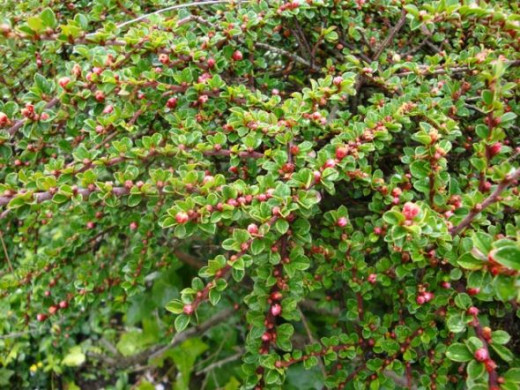
This attractive shrub with red berries and stiff branches have sprouted all over the yard. I discovered that it is Rock Cotoneaster which is drought-resistant and is a plant for all seasons. It produces flowers in late spring, with glossy leaves with red berries in the Autumn and Fall all through Winter.
Wind-pollinated Asparagus Densiflorus Sprengeri Fern - Blowing in the wind...
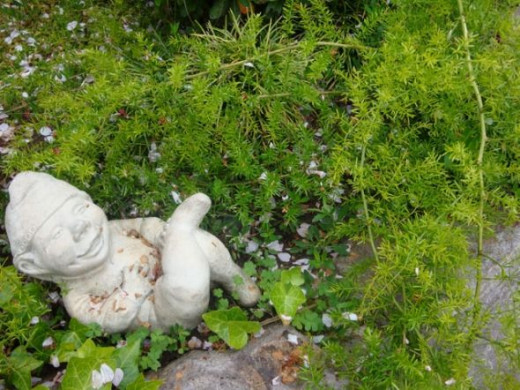
Is this gnome happy because it gained a new friend? Yes, the asparagus fern grew right next to it. The rapid growing delicate needlelike leaves with tiny thorns have a delicate appearance but can get invasive and take over a garden if you let it.
Interesting pollination links you do not want to miss
- Celebrating Wildflowers - Pollinators
Celebrating Wildflowers is events, wildflower viewing areas, wildflower photos, native plant information, pollinators, just for kids, coloring pages, teacher resources, ferns, rare plants, plant of the week, pollinator of the month, invasive plants, - Coevolution and Pollination
Coevolution is the the mutual evolutionary influence between two species (the evolution of two species totally dependent on each other). Each of the species involved exerts selective pressure on the other, so they evolve together. Coevolution is an e - pollination
Plants have formed associations with animals over a million years ago to ensure pollination. - Pollination of Tree Fruits
Most fruit trees need cross-pollination for good fruit set, and you may need to buy more than just one variety. - Hand Pollination
Hand Pollination A Gardener's Illustrated Guide Photos and text copyright 2001, David L. Green, All rights reserved� We'll start with a lily, which has large flowers and large organs, with colorful pollen as well. The first step is to understand and - Our Forgotten Pollinators: Protecting the Birds and Bees
Pesticide Impacts onBenefical Organisms Our Forgotten Pollinators: Protecting the Birds and Bees By Mrill Ingram, Gary Nabhan and Stephen Buchmann.Source: Global Pesticide CampaignerVolume 6, Number 4, December 1996 PANNA, San Francisco, CAA recent s
Attract Honey Bees Wildflower Seed Mixture for Pollination 500 + Seeds
Honey Bee Attractant
(3 lures per kit)
Fragrant Flower Garden Mix 10,000 Seeds/15 Grams
What Is Pollination?
(Big Science Ideas)
The First Flower:
How pollination works and why insects are so important
The Natural History of Pollination
Cross-Pollinations:
The Marriage of Science and Poetry
(Credo)
Pollination and Floral Ecology
Storey's Guide to Keeping Honey Bees:
Honey Production, Pollination, Health
(Storey's Guide to Raising)
Crop Pollination by Bees
Experimental pollination; an outline of the ecology of flowers and insects

